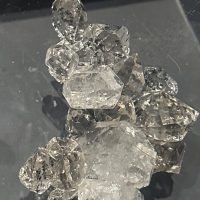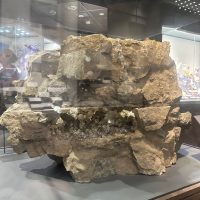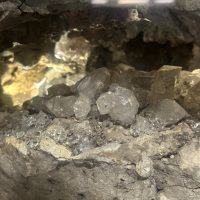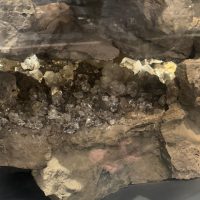A Few of My Favorite Things: Sue Lutz
Smithsonian staff and volunteers work countless hours in the halls of our museums and research centers, in the field, at the Zoo, in our gardens and facilities. We are privileged to spend time with some of the nation’s most cherished treasures as we go about our duties. Sometimes, these unique experiences find a special place in our own personal stories. Amy Kehs introduces Sue Lutz and a few of her favorite Smithsonian things.
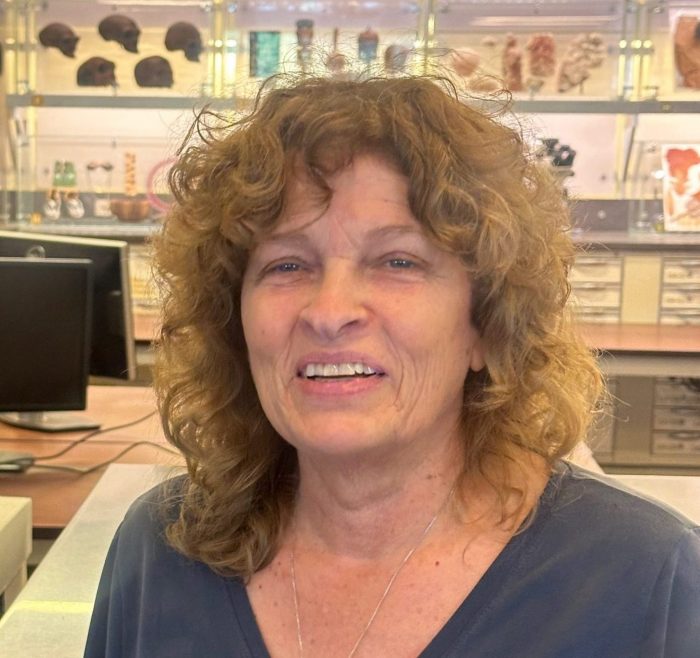
Sue Lutz (Photo by Amu Kehs)
Sue Lutz’s story is reminiscent of this lovely line from Oprah Winfrey: “I believe luck is preparation meeting opportunity. If you hadn’t been prepared when the opportunity came along, you wouldn’t have been lucky.” From teaching high school English to cooking on a research boat, Sue’s eclectic experience created someone who can manage a giant collection of species in the Botany division at the National Museum of Natural History, where she recently was the acting collections manager and now works to support the department.
In the early 1980s, Sue was teaching at a high school in Pennsylvania while cooking part-time in a local steakhouse. One day, a friend asked if she’d be interested in being a cook on a boat. Sue said, “Sure!” That boat happened to be the R/V Marsys Resolute, a Smithsonian research vessel working on the geomorphology of Gloucester Bay in the Gulf of Maine. While chopping on choppy waters, Sue listened to her colleagues, always learning along the way—both about the research and herself. She started saying yes to every little request, realizing that it could lead to more knowledge and opportunities.
After taking to the seas, Sue took advantage of her master’s degree in environmental biology to get a job at the Smithsonian Marine Systems Lab, where she stayed for 15 years. In 2000, the Botany Department needed help catching up on some paperwork. So Sue said, “Sure!” That temporary help became a permanent position in the Botany Department, including a seven-year stint as the collections manager, where she helped organize the collection of over five million species—if only there were room here to ask about millions of favorite things!
-
A close-up view of the “Herkimer Diamond” quartz on display in Gem Hall. Herkimer quartz crystals grow with minimal attachment to rock and have crystal faces on both ends.
Photo Credit: Amy Kehs
-
The “Herkimer Diamond” quartz on display in Gem Hall.
Photo Credit: Amy Kehs
-
The “Herkimer Diamond” quartz on display in Gem Hall came from New York’s Herkimer County.
Photo Credit: Amy Kehs
-
The “Herkimer Diamond” quartz on display in Gem Hall.
Photo Credit: Amy Kehs
Sue’s first favorite thing is the “Herkimer Diamond,” on display in the Natural History museum’s Janet Annenberg Hooker Hall of Geology, Gems, and Minerals. Herkimer diamonds are not actually diamonds at all, but double-terminated quartz crystals (say that five times fast) found primarily in Herkimer County, New York, hence the name. They are known for their exceptional clarity and natural faceting which makes them look like true diamonds. Once, when Sue and her family were visiting the Herkimer Diamond Mines, they saw a large fenced-off area. She asked what was going on, and the guide told her that it was a very important specimen going to the Smithsonian. Sue laughed, not entirely believing it. But sure enough—that quartz formation was signed, sealed and delivered to her very building, and it’s now on display in Gem Hall.
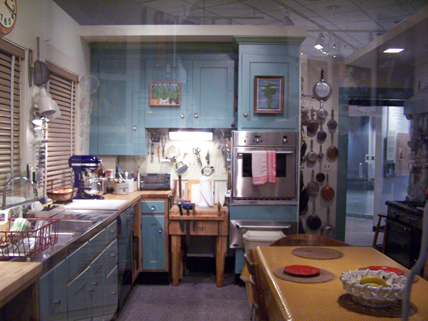
Julia’ Child’s home kitchen. (Image courtesy National Museum of American History)
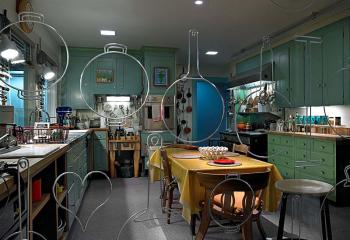
Julia Child’s kitchen on display at the National Museum of American History. The exhibition replicates her home kitchen in every detail.
Sue’s gems go beyond geodes. As a cook, her second favorite thing is Julia Child’s Kitchen on display at the National Museum of American History. Julia Child was an American chef, author and television personality who popularized French cuisine in the United States with her pioneering cookbook “Mastering the Art of French Cooking” and her television show “The French Chef.” Her approachable style and enthusiasm for cooking inspired generations of home cooks, including Sue. Julia Child donated the kitchen from her home in Cambridge, Massachusetts to the museum in 2001 and it’s now on display in the “Food: Transforming the American Table” exhibition.
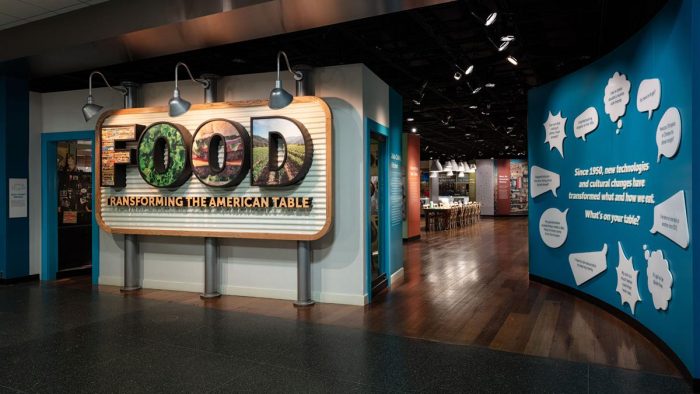
The “Food: Transforming the American Table” exhibition at the National Museum of American History is the home of Julia Child’s kitchen.
Sue’s third favorite thing is the National Portrait Gallery. She loves the quiet space, the changing exhibits and the touch of nature in the Kogod Courtyard. Besides her own museum, it’s her favorite to visit. Built in the early 1800s and home to several government departments over the years, its block-long building—the Old Patent Office Building—has quite the history. Walt Whitman called it the “noblest of Washington buildings,” having read to wounded soldiers there when it served as a Civil War hospital. Clara Barton graced its halls as a clerk to the Patent Commissioner. Abraham Lincoln even used it for his second Inaugural Ball. In 1953, it was scheduled to be torn down (to put in a parking lot!) until President Eisenhower signed legislation giving it to the Smithsonian.

“Patent Office Building,” 1846, in Washington, D.C. The Patent Office Building is now home to the Donald W. Reynolds Center for American Art and Portraiture, housing the Smithsonian’s National Portrait Gallery and Smithsonian American Art Museum.
Daguerreotype by John Plumbwe Jr. via The Library of Congress
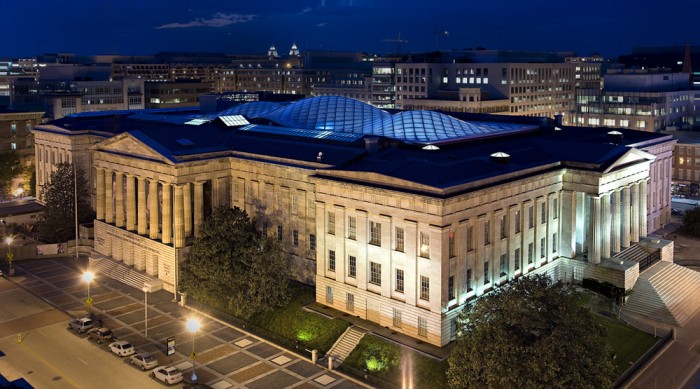
After undergoing an extensive renovation, the Patent Office Building was renamed the Donald W. Reynolds Center for American Art and Portraiture in 2006. (Photo by Ken Rahaim)
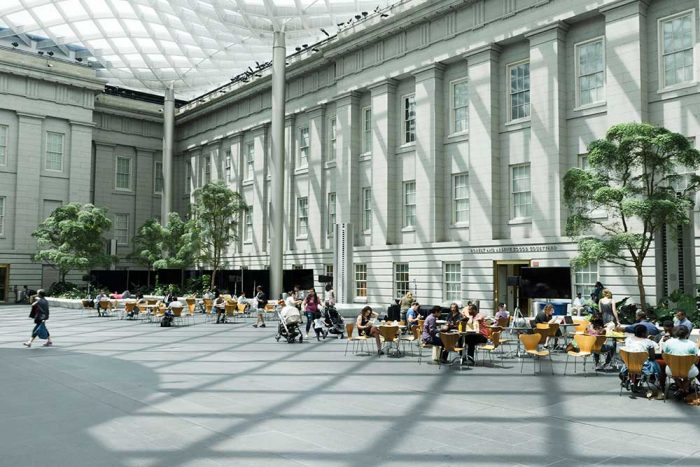
The Kogod Courtyard is shared by the Smithsonian’s National Portrait Gallery and the American Art Museum at the Donald W. Reynolds Center.
And it’s a good thing he did, so Sue and so many others could sit there reflecting on everything they’ve learned, and everything they don’t yet know—but could possibly find out by just saying “Sure!”
Posted: 5 May 2025
- Categories:
